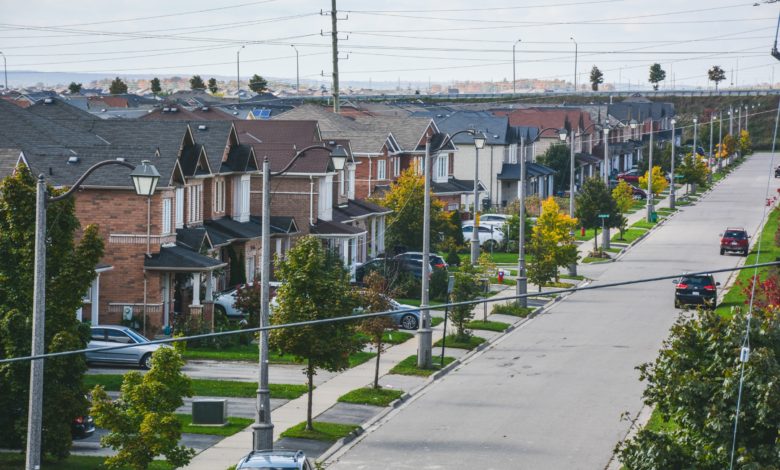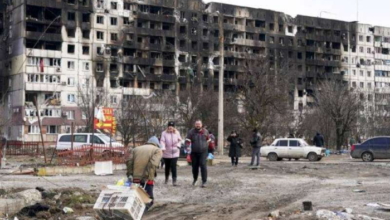Climate change focus moves to the suburbs as cities continue to sprawl
Seeking solutions as pandemic race for space exacerbates a climate-unfriendly trend

You might think that cramped and crowded cities, dense with roads and highrise towers, are bad for the environment and bad for addressing climate change.
But it is a long-established principle of environmental economics that while the land beneath urban cores has been largely stolen from nature, cities provide ecological benefits. Packing people all into one place, called “densification,” makes carbon-friendly public transit work. It also allows us to concentrate services such as sewage treatment and energy systems.
Perhaps most important, environmentalists have hoped that concentrating people into dynamic cities such as London, New York, Montreal and Vancouver would take the pressure off surrounding green spaces that are so essential for keeping the environment healthy.
But there are increasing signs that those hopes have faded and that COVID-19 has just made things worse. Climate scientists say it is time to take that into account.
The race for space
“In the early 2000s, there was a lot of talk about a return to the cities, and millennials and boomers wanting to be back, choosing cities over suburbs, but that has been somewhat disproven,” said Hannah Teicher, a researcher at the University of Victoria’s Pacific Institute for Climate Solutions in British Columbia.
In the midst of the well-publicized pandemic race for space — as Canadians worked, went to school and entertained themselves in homes that suddenly seemed too crowded — Statistics Canada released data showing that rather than rushing into cities to take advantage of their vibrancy and services, people were moving out.
“Urban sprawl continues, with Toronto and Montreal both experiencing record-high population losses to surrounding areas,” said a mid-January report from the statistical agency.
In June, Prime Minister Justin Trudeau announced “the first-ever Census of the Environment,” a Statistics Canada program to quantify the country’s green spaces and how quickly they are being lost to industry and urbanization.
One of the difficult things for the Statistics Canada researchers working on the new census, including the project’s research manager, François Soulard, is how to put an economic value on the benefits they offer.
Green payoff versus profits
“We know that ecosystems provide goods and services that we rely on every day, generally without noticing it,” Soulard said in an email conversation on Friday. Until crises like the heat dome in Western Canada or deadly floods arrive, things such as air quality, carbon sequestration, flood protection and heat mitigation seldom stack up against the profits of real estate development — especially when Canadians are demanding more single-family homes.
In fact, some analysts, including from the real estate industry, say the solution to a housing shortage is to cut red tape and let builders build.
According to new research published last week by Teicher and two colleagues, if the trend away from downtown cores continues, it is essential to urgently refocus some of the effort to fight climate change from cities to suburbia.
While the authors still believe urban densification is better for the environment, their paper — titled Climate Solutions to Meet the Suburban Surge: Leveraging COVID-19 recovery to enhance suburban climate governance — addresses the reality that in both Canada and the United States, the trend toward sprawl will be hard to stop.
The only pragmatic solution, Teicher said in an interview on Friday, is to develop policy to mitigate the worst impacts of suburban and exurban sprawl.
Making the burbs better
“We’re not going to turn suburbs into cities, and suburban development is going to continue. The question is how can you redevelop existing suburbs to some extent and how can you make new suburbs better,” she said.
With new suburbs, one technique is to build around the ecological goods and services that Soulard referred to so that they continue to provide their economic and climate benefits. That requires rules demanding developers preserve watersheds, wetlands and forest rather than paving over them, Teicher said.
Part of the solution is to increase the density of suburbs similar to the push in existing urban cores, where in what has been called “socialism for the rich,” swaths of single-family homes have become sacrosanct despite a high cost to all taxpayers.
Teicher’s research notes that already, in suburbs surrounding Vancouver and Portland, Ore., there has been what she describes as “gentle densification” as property owners have been allowed to build more housing on existing suburban lots.
Teicher’s research shows that rules insisting on better insulation and airtight construction can make it more practical for suburban energy to be produced locally using solar and ground source heat pumps.
One trend that is already happening is that suburbs have developed their own highrise business centres that, combined with a pandemic shop local movement, could mean fewer polluting automobile trips to city centres or malls.
“On the global climate stage, there’s been a lot of attention to cities,” Teicher said. “I think we need equal attention to suburbs.”
CBC News







